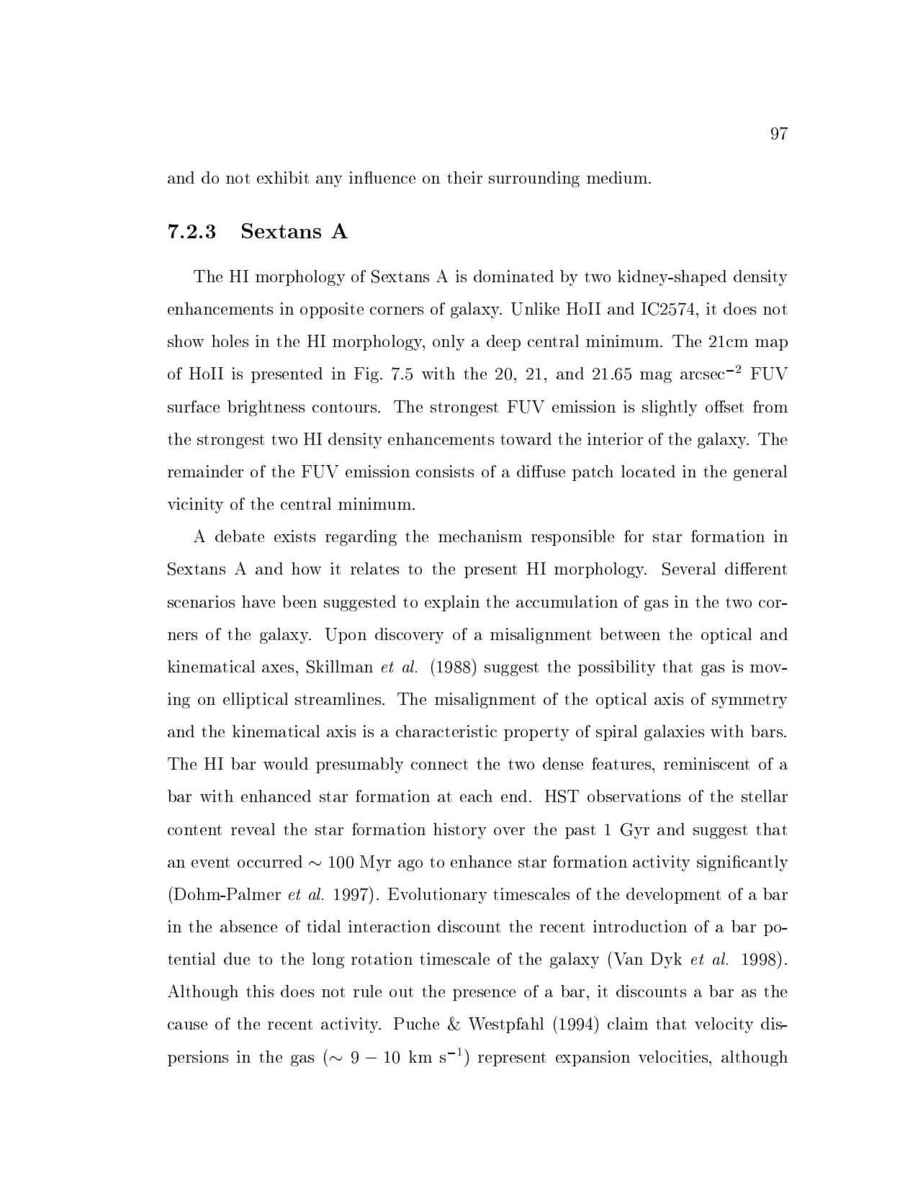
97
and do not exhibit any in uence on their surrounding medium.
7.2.3 Sextans A
The HI morphology of Sextans A is dominated by two kidney-shaped density
enhancements in opposite corners of galaxy. Unlike HoII and IC2574, it does not
show holes in the HI morphology, only a deep central minimum. The 21cm map
of HoII is presented in Fig. 7.5 with the 20, 21, and 21.65 mag arcsec
,
2
FUV
surface brightness contours. The strongest FUV emission is slightly o set from
the strongest two HI density enhancements toward the interior of the galaxy. The
remainder of the FUV emission consists of a di use patch located in the general
vicinity of the central minimum.
A debate exists regarding the mechanism responsible for star formation in
Sextans A and how it relates to the present HI morphology. Several di erent
scenarios have been suggested to explain the accumulation of gas in the two cor-
ners of the galaxy. Upon discovery of a misalignment between the optical and
kinematical axes, Skillman
et
al.
1988 suggest the possibility that gas is mov-
ing on elliptical streamlines. The misalignment of the optical axis of symmetry
and the kinematical axis is a characteristic property of spiral galaxies with bars.
The HI bar would presumably connect the two dense features, reminiscent of a
bar with enhanced star formation at each end. HST observations of the stellar
content reveal the star formation history over the past 1 Gyr and suggest that
an event occurred
100 Myr ago to enhance star formation activity signi cantly
Dohm-Palmer
et
al.
1997. Evolutionary timescales of the development of a bar
in the absence of tidal interaction discount the recent introduction of a bar po-
tential due to the long rotation timescale of the galaxy Van Dyk
et
al.
1998.
Although this does not rule out the presence of a bar, it discounts a bar as the
cause of the recent activity. Puche & Westpfahl 1994 claim that velocity dis-
persions in the gas
9
,
10 km s
,
1
represent expansion velocities, although
